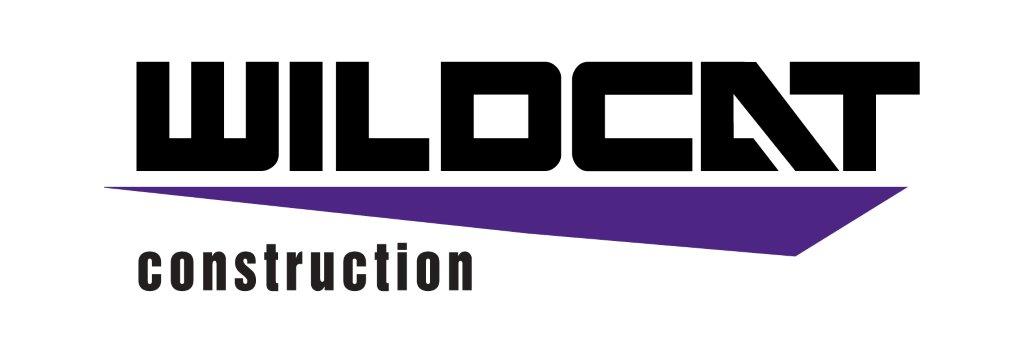Title Page
-
Site/Client
-
Date
-
Prepared by
-
Location
GENERAL WORK ENVIRONMENT
GENERAL WORK ENVIRONMENT
-
Are all worksites clean and orderly?
-
Are work surfaces kept dry or appropriate means taken to assure the surfaces are slip-resistant?
-
Are all spilled materials or liquids cleaned up immediately?
-
Is combustible scrap, debris and waste stored safely and removed from the worksite promptly?
-
Is accumulated combustible dust routinely removed from elevated surfaces, including the overhead structure of buildings?
-
Is combustible dust cleaned up with a vacuum system to prevent the dust from going into suspension?
-
Is metallic or conductive dust prevented from entering or accumulation on or around electrical enclosures or equipment?
-
Are covered metal waste cans used for oily and paint-soaked waste?
-
Are all oil and gas fired devices equipped with flame failure controls that will prevent flow of fuel if pilots or main burners are not working?
-
Are paint spray booths, dip tanks and the like cleaned regularly?
-
Are the minimum number of toilets and washing facilities provided?
-
Are all toilets and washing facilities clean and sanitary?
-
Are all work areas adequately illuminated?
-
Are pits and floor openings covered or otherwise guarded?
-
Please proceed to the next page.
PERSONAL PROTECTIVE EQUIPMENT
PERSONAL PROTECTIVE EQUIPMENT
-
Are protective goggles or face shields provided and worn where there is any danger of flying particles or corrosive materials?
-
Are approved safety glasses required to be worn at all times in areas where there is a risk of eye injuries such as punctures, abrasions, contusions or burns?
-
Are employees who need corrective lenses (glasses or contacts lenses) in working environments with harmful exposures, required to wear only approved safety glasses, protective goggles, or use other medically approved precautionary procedures?
-
Are protective gloves, aprons, shields, or other means provided against cuts, corrosive liquids and chemicals?
-
Are hard hats provided and worn where danger of falling objects exists?
-
Are hard hats inspected periodically for damage to the shell and suspension system?
-
Is appropriate foot protection required where there is the risk of foot injuries from hot, corrosive, poisonous substances, falling objects, crushing or penetrating actions?
-
Are approved respirators provided for regular or emergency use where needed?
-
Is all protective equipment maintained in a sanitary condition and ready for use?
-
Do you have eye wash facilities and a quick drench shower within the work area where employees are exposed to injurious corrosive materials?
-
Where special equipment is needed for electrical workers, is it available?
-
When lunches are eaten on the premises, are they eaten in areas where there is no exposure to toxic materials or other health hazards?
-
Is protection against the effects of occupational noise exposure provided when sound levels exceed those of the Cal/OSHA noise standard?
-
Please proceed to the next page.
WALKWAYS
WALKWAYS
-
Are aisles and passageways kept clear?
-
Are aisles and walkways marked as appropriate?
-
Are wet surfaces covered with non-slip materials?
-
Are holes in the floor, sidewalk or other walking surface repaired properly, covered or otherwise made safe?
-
Is there safe clearance for walking in aisles where motorized or mechanical handling equipment is operating.
-
Are spilled materials cleaned up immediately?
-
Are materials or equipment stored in such a way that sharp projectiles will not interfere with the walkway?
-
Are changes of direction or elevations readily identifiable?
-
Are aisles or walkways that pass near moving or operating machinery, welding operations or similar operations arranged so employees will not be subjected to potential hazards?
-
Is adequate headroom provided for the entire length of any aisle or walkway?
-
Are standard guardrails provided wherever aisle or walkway surfaces are elevated more than 30 inches above any adjacent floor or the ground?
-
Are bridges provided over conveyors and similar hazards?
-
Please proceed to the next page.
FLOOR AND WALL STAIRWAYS
FLOOR AND WALL STAIRWAYS
-
Are floor openings guarded by a cover, guardrail, or equivalent on all sides (except at entrance to stairways or ladders)?
-
Are toeboards installed around the edges of a permanent floor opening (where persons may pass below the opening)?
-
Are skylight screens of such construction and mounting that they will withstand a load of at least 200 pounds?
-
Is the glass in windows, doors, glass walls that are subject to human impact, of sufficient thickness and type for the condition of use?
-
Are grates or similar type covers over floor openings such as floor drains, of such design that foot traffic or rolling equipment will not be affected by the grate spacing?
-
Are unused portions of service pits and pits not actually in use either covered or protected by guardrails or equivalent?
-
Are manhole covers, trench covers and similar covers, plus their supports, designed to carry a truck rear axle load of at least 20,000 pounds when located in roadways and subject to vehicle traffic?
-
Are floor or wall openings in fire resistive construction provided with doors or covers compatible with the fire rating of the structure and provided with self-closing feature when appropriate?
-
Please proceed to the next page.
STAIRS & STAIRWAYS
STAIRS & STAIRWAYS
-
Are standard stair rails or handrails on all stairways having four or more risers?
-
Are all stairways at least 22 inches wide?
-
Do stairs have at least a 6'6" overhead clearance?
-
Do stairs angle no more than 50 and no less than 30 degrees?
-
Are stairs of hollow-pan type treads and landings filled to noising level with solid material?
-
Are step risers on stairs uniform from top to bottom, with no riser spacing greater than 7-1/2 inches?
-
Are steps on stairs and stairways designed or provided with a surface that renders them slip resistant?
-
Are stairway handrails located between 30 and 34 inches above the leading edge of stair treads?
-
Do stairway handrails have a least 1-1/2 inches of clearance between the handrails and the wall or surface they are mounted on?
-
Are stairway handrails capable of withstanding a load of 200 pounds, applied in any direction?
-
Where stairs or stairways exit directly into any area where vehicles may be operated, are adequate barriers and warnings provided to prevent employees stepping into the path of traffic?
-
Do stairway landings have a dimension measured in the direction of travel, at least equal to width of the stairway?
-
Is the vertical distance between stairway landings limited to 12 feet or less?
-
Please proceed to the next page.
ELEVATED SURFACES
ELEVATED SURFACES
-
Are signs posted, when appropriate, showing the elevated surface load capacity?
-
Are surfaces elevated more than 30 inches above the floor or ground provided with standard guardrails?
-
Are all elevated surfaces (beneath which people or machinery could be exposed to falling objects) provided with standard 4-inch toeboards?
-
Is a permanent means of access and egress provided to elevated storage and work surfaces?
-
Is required headroom provided where necessary?
-
Is material on elevated surfaces piled, stacked or racked in a manner to prevent it from tipping, falling, collapsing, rolling or spreading?
-
Are dock boards or bridge plates used when transferring materials between docks and trucks or rail cars?
-
Please proceed to the next page.
EXITING OR EGRESS
EXITING OR EGRESS
-
Are all exits marked with an exit sign and illuminated by a reliable light source?
-
Are the directions to exits, when not immediately apparent, marked with visible signs?
-
Are doors, passageways or stairways, that are neither exits nor access to exits and which could be mistaken for exits, appropriately marked "NOT AN EXIT", "TO BASEMENT", "STOREROOM", and the like?
-
Are exit signs provided with the word "EXIT" in lettering at least 5 inches high and the stroke of the lettering at least 1/2 inch wide?
-
Are exit doors side-hinged?
-
Are all exits kept free of obstructions?
-
Are at least two means of egress provided from elevated platforms, pits or rooms where the absence of a second exit would increase the risk of injury from hot, poisonous, corrosive, suffocating, flammable, or explosive substances?
-
Are there sufficient exits to permit prompt escape in case of emergency?
-
Are special precautions taken to protect employees during construction and repair operations?
-
Is the number of exits from each floor of a building, and the number of exits from the building itself, appropriate for the building occupancy load?
-
Are exit stairways which are required to be separated from other parts of a building enclosed by at least two hour fire-resistive construction in buildings more than four stories in height, and not less than one-hour fire resistive construction elsewhere?
-
When ramps are used as part of required exiting from a building, is the ramp slope limited to 1- foot vertical and 12 feet horizontal?
-
Where exiting will be through frameless glass doors, glass exit doors, storm doors, and such are the doors fully tempered and meet the safety requirements for human impact?
-
Please proceed to the next page.
EXIT DOORS
EXIT DOORS
-
Are doors that are required to serve as exits designed and constructed so that the way of exit travel is obvious and direct?
-
Are windows that could be mistaken for exit doors, made inaccessible by means of barriers or railings?
-
Are exit doors openable from the direction of exit travel without the use of a key or any special knowledge or effort, when the building is occupied?
-
Is a revolving, sliding or overhead door prohibited from serving as a required exit door?
-
Where panic hardware is installed on a required exit door, will it allow the door to open by applying a force of 15 pounds or less in the direction of the exit traffic?
-
Are doors on cold storage rooms provided with an inside release mechanism that will release the latch and open the door even if it's padlocked or otherwise locked on the outside?
-
Where exit doors open directly onto any street, alley or other area where vehicles may be operated, are adequate barriers and warnings provided to prevent employees stepping into the path of traffic?
-
Are doors that swing in both directions and are located between rooms where there is frequent traffic, provided with viewing panels in each door?
-
Please proceed to the next page.
PORTABLE LADDERS
PORTABLE LADDERS
-
Are all ladders maintained in good condition, joints between steps and side rails tight, all hardware and fittings securely attached, and moveable parts operating freely without binding or undue play?
-
Are non-slip safety feet provided on each ladder?
-
Are non-slip safety feet provided on each metal or rung ladder?
-
Are ladder rungs and steps free of grease and oil?
-
Is it prohibited to place a ladder in front of doors opening toward the ladder except when the door is blocked open, locked or guarded?
-
Is it prohibited to place ladders on boxes, barrels, or other unstable bases to obtain additional height?
-
Are employees instructed to face the ladder when ascending or descending?
-
Are employees prohibited from using ladders that are broken, missing steps, rungs, or cleats, broken side rails or other faulty equipment?
-
Are employees instructed not to use the top 2 steps of ordinary stepladders as a step?
-
When portable rung ladders are used to gain access to elevated platforms, roofs, and the like does the ladder always extend at least 3 feet above the elevated surface?
-
Is it required that when portable rung or cleat type ladders are used the base is so placed that slipping will not occur, or it is lashed or otherwise held in place?
-
Are portable metal ladders legibly marked with signs reading "CAUTION" "Do Not Use Around Electrical Equipment" or equivalent wording?
-
Are employees prohibited from using ladders as guys, braces, skids, gin poles, or for other than their intended purposes?
-
Are employees instructed to only adjust extension ladders while standing at a base (not while standing on the ladder or from a position above the ladder)?
-
Are metal ladders inspected for damage?
-
Are the rungs of ladders uniformly spaced at 12 inches, center to center?
-
Please proceed to the next page.
HAND TOOLS & EQUIPMENT
HAND TOOLS & EQUIPMENT
-
Are all tools and equipment (both, company and employee-owned) used by employees at their workplace in good condition?
-
Are hand tools such as chisels, punches, which develop mushroomed heads during use, reconditioned or replaced as necessary?
-
Are broken or fractured handles on hammers, axes and similar equipment replaced promptly?
-
Are worn or bent wrenches replaced regularly?
-
Are appropriate handles used on files and similar tools?
-
Are employees made aware of the hazards caused by faulty or improperly used hand tools?
-
Are appropriate safety glasses, face shields, and similar equipment used while using hand tools or equipment that might produce flying materials or be subject to breakage?
-
Are jacks checked periodically to assure they are in good operating condition?
-
Are tool handles wedged tightly in the head of all tools?
-
Are tool cutting edges kept sharp so the tool will move smoothly without binding or skipping?
-
Are tools stored in dry, secure location where they won't be tampered with?
-
Is eye and face protection used when driving hardened or tempered spuds or nails?
COMPLETION
-
Additional Notes
-
Sign Off









